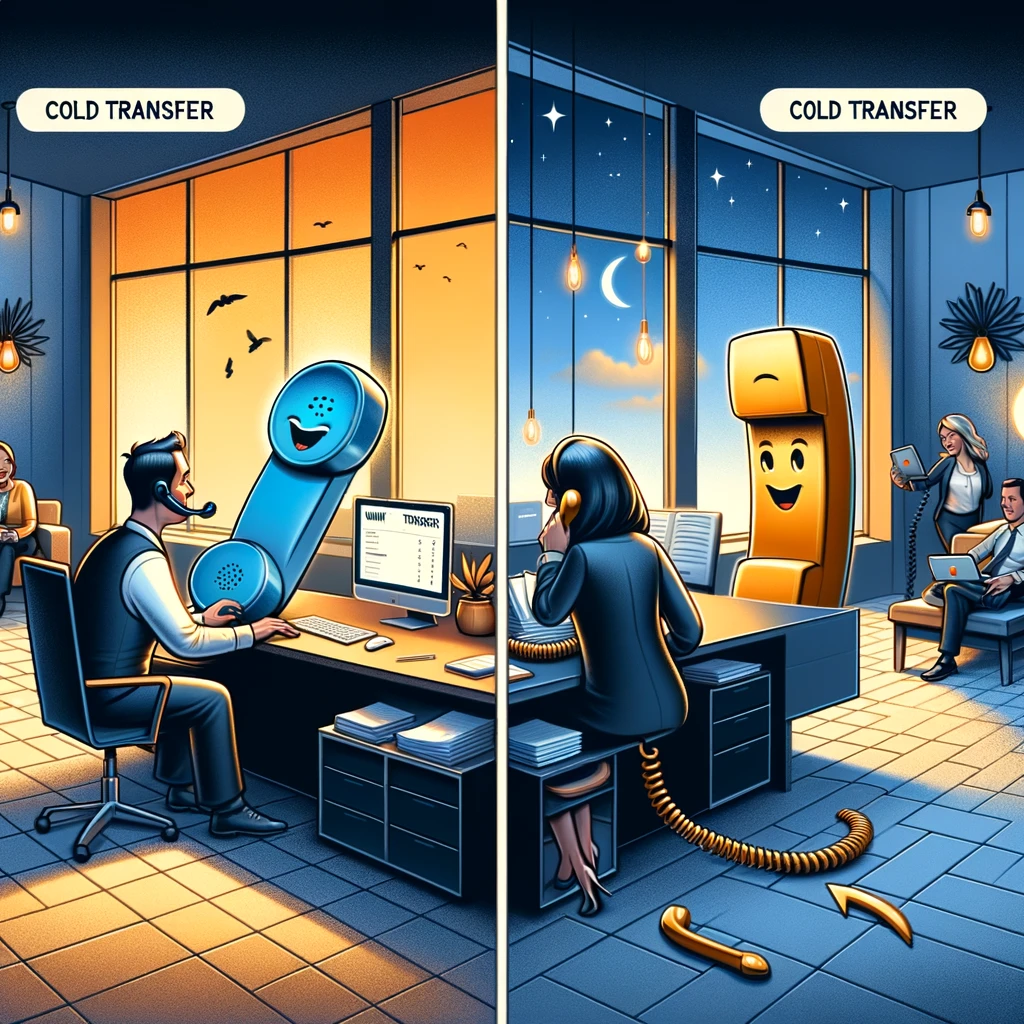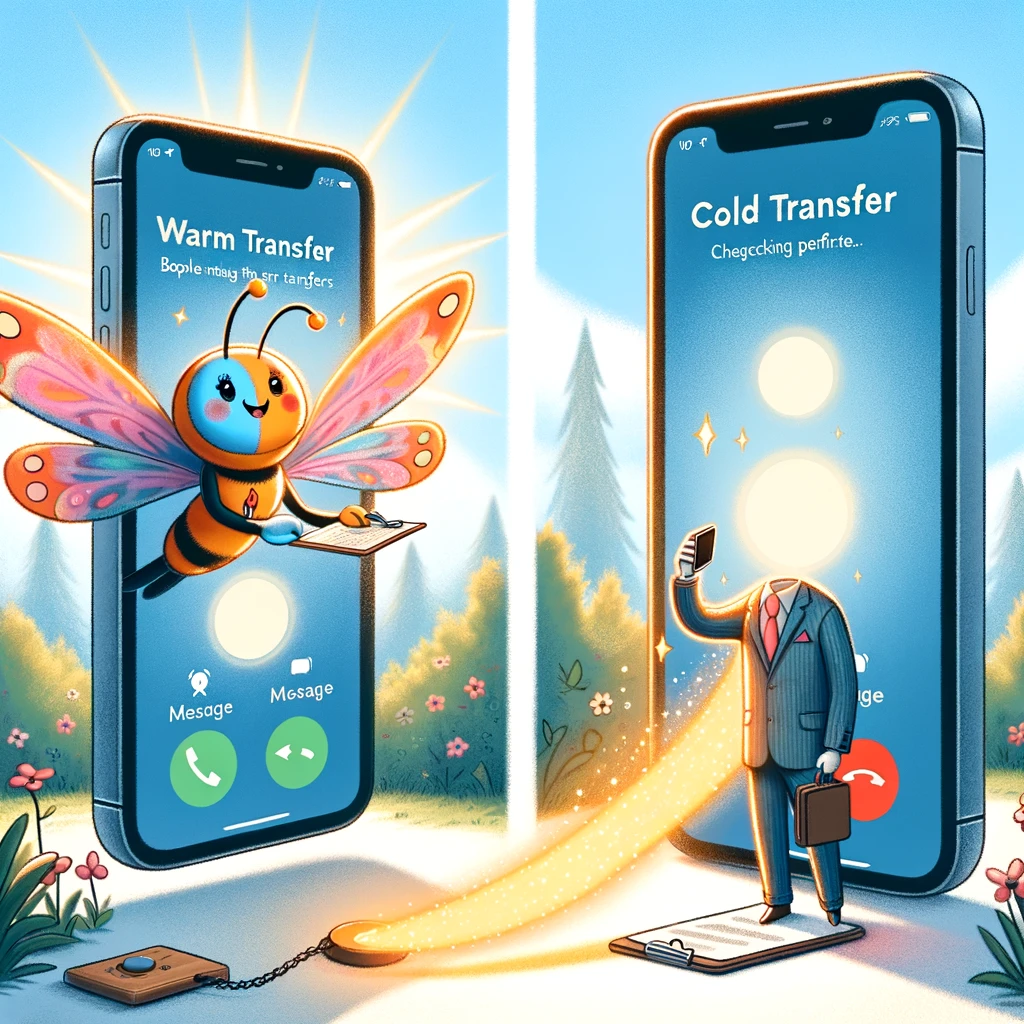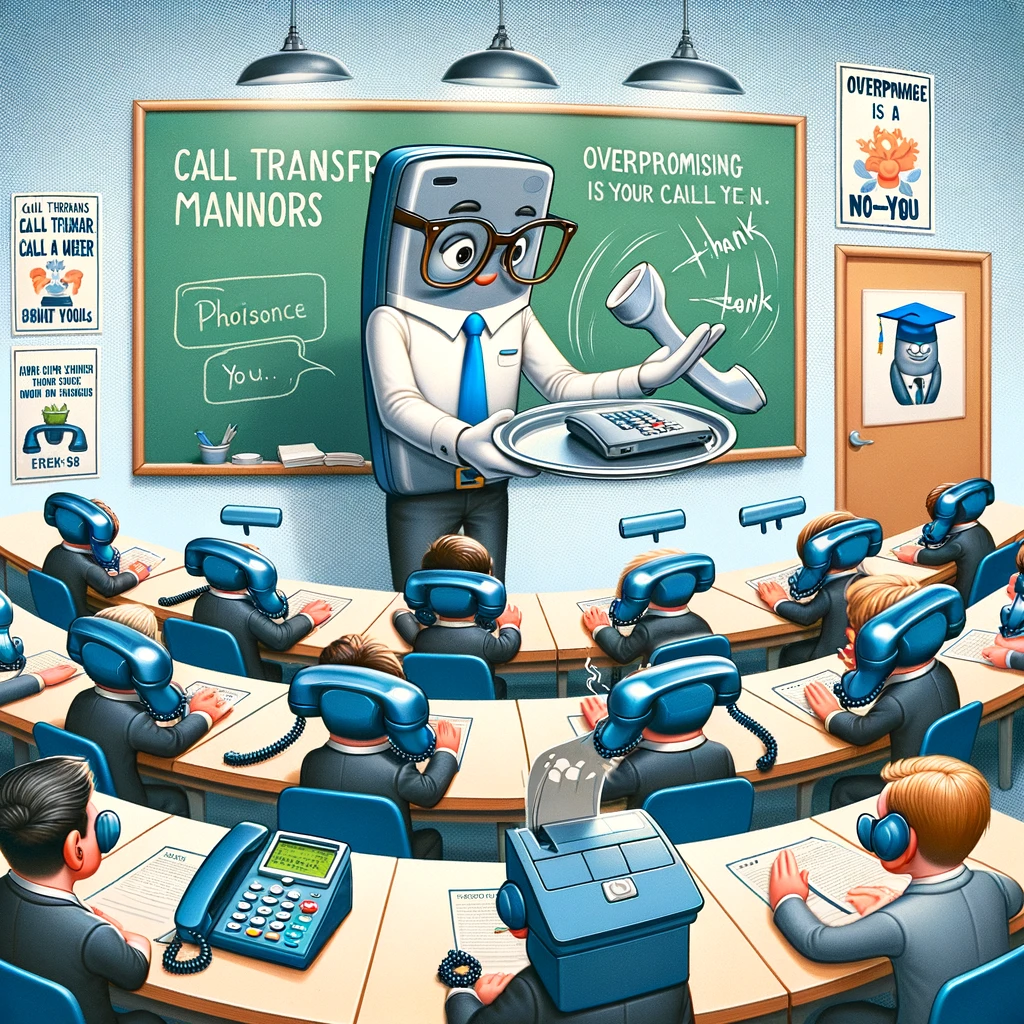You’ve probably heard transferring calls is as easy as pie—until you accidentally hang up on an important client.
Summary:
- The Essence of Call Transferring Versus Call Forwarding
- Unpacking the Warm and Cold Transfer Conundrum
- Step-by-Step: Transferring Calls Like a Pro Using Your Computer
- Navigating iPhone Call Transfers with Ease
- Strategic Insights for Seamless Call Transferring
- Polishing Your Call Transfer Manners
The Problem

There are a couple of things about call transfers that can be frustrating for callers, and these are the most common sources of controversy:
- Multiple Transfers: Getting bounced around from department to department, having to repeat your issue multiple times, is a major pain point for callers. This can waste time and create a sense of being unimportant to the company.
- Reaching the Wrong Department: Being transferred to someone who can’t actually help with your problem is another source of frustration. In an ideal world, the initial call routing would get you to the right person the first time.
- Long Hold Times: Spending a long time on hold in between transfers can be very irritating. This can be compounded by the issue above, where after a long wait you end up having to explain everything again.
Scenario 1: The “Transfer Ping-Pong”
You call your internet provider because your service is down. Here’s how the call could go:
- You: Explain your issue to the first customer service representative.
- Rep 1: Transfers you to the technical support department.
- You: Explain your issue again to the technical support representative.
- Rep 2: Determines it’s a billing issue and transfers you back to customer service.
- You: Explain your issue a third time to another customer service representative.
This infuriating situation leaves you feeling unheard and frustrated, and wastes a lot of your time.
Scenario 2: Lost in the System
You call your bank to dispute a charge on your credit card. Here’s what might happen:
- You: Explain the disputed charge to the first representative.
- Rep 1: Transfers you to the fraud department.
- You: Explain the situation again and wait on hold for a long time.
- Rep 2: Informs you they can’t help, and that you need to speak with the general customer service line (sending you back to square one).
This leaves you feeling like you’re getting the runaround, and casts doubt on whether your issue will ever be resolved.
How Companies Can Improve
Businesses can mitigate these negative experiences by:
- Improved Training: Ensure all representatives have a broad understanding of the company’s services and departments, so they can better route calls on the first try.
- Warm Transfers: When a transfer is necessary, the first representative can briefly introduce the caller and their issue to the next person, saving the caller the frustration of repeating themselves.
- Technology Upgrades: Employing systems that log customer information and track the call history, so when transfers are necessary, the next representative has context.
The Essence of Call Transferring Versus Call Forwarding

You might think call transfer and call forwarding are two sides of the same coin. Not quite. Call forwarding is your go-to when you’re hitting the beach, forwarding calls to another number before they even ring. Transfer? That’s for when you pick up and realize the caller’s better off with someone else. Think of it as the polite way to say, “You really need to talk to my colleague about this.”
Unpacking the Warm and Cold Transfer Conundrum

Here’s the scoop: you’ve got warm transfers and cold transfers. Warm is when you’re the polite host, introducing the caller to their new best friend on the other line. Cold, on the other hand, is more like, “Here, talk to this person,” and you’re out. Both have their moments, but it’s all about not leaving the caller out in the cold (pun intended).
Step-by-Step: Transferring Calls Like a Pro Using Your Computer

With KeKu, transferring calls is a breeze, whether you’re going for a warm hug or a cool handshake. Warm transfers are about keeping everyone in the loop. You park the caller, ring up your colleague, and give them the lowdown before making the intro. Cold transfers? Skip the chit-chat, transfer with a click, and you’re done.
Navigating iPhone Call Transfers with Ease

On the iPhone, KeKu shines with options. Warm transfers mean checking if your colleague is ready for the handoff. A couple of taps, a quick note if you like, and you’re connecting people like a social butterfly. Cold transfers are straightforward—hold, transfer, and your job here is done.
Strategic Insights for Seamless Call Transferring
Not every call needs the full backstory. If it’s a quick question or a specific request, a cold transfer works wonders. But if you’ve been talking about their life story, warm up the transfer with some context. And always, always check if your teammate is actually there to take the call.
Polishing Your Call Transfer Manners

Good manners go a long way. Get the gist of the caller’s needs, politely ask if you can transfer them, and maybe slip in the direct number they can call back if they need to. Overpromising is a no-no. And don’t forget to say thanks—it’s the cherry on top of your professional demeanor.
Call Transfers are Easy with KeKu
Transferring calls shouldn’t be a hurdle. With KeKu, it’s about making sure the caller gets to the right person without feeling like they’re being passed around. Whether you’re team warm or cold, the goal is to make it smooth and keep that professional shine.
Frequently Asked Questions About Call Transfers
Call transferring might seem straightforward, but it’s surrounded by questions that can make or break the efficiency and professionalism of your communication. Let’s dive into the most common queries and shed some light on this crucial feature.
1. What exactly is call transferring, and how does it differ from call forwarding? Call transferring is the process of relocating an active call to another line or person, usually done after the call has been answered. In contrast, call forwarding automatically redirects incoming calls to another number before they’re answered, ideal for when you’re unavailable.
2. Are there different types of call transfers? Yes, there are two main flavors: warm and cold. Warm transfers involve a brief introduction of the caller to the new recipient, providing context before leaving the conversation. Cold transfers, or blind transfers, send the call directly to someone else without prior introduction.
3. How do I execute a warm call transfer on my computer using KeKu? Warm transferring with KeKu involves a few simple steps: put the caller on hold, contact the person you’re transferring to, brief them about the caller’s needs, and then complete the transfer. It’s like making a polite introduction at a networking event.
4. What about cold transfers? Cold transfers with KeKu are even simpler: place the caller on hold, click the transfer option, and choose the person you’re transferring the call to. It’s the call transferring equivalent of a quick baton pass in a relay race.
5. Can I transfer calls on my iPhone? Absolutely. KeKu makes call transferring seamless across devices, including iPhones. The process mirrors that on a computer but is optimized for mobile use, ensuring you can manage calls on the go.
6. What strategies should I consider for effective call transferring? Consider the context of the call: use cold transfers for straightforward queries and warm transfers when more explanation is needed. Always check your teammate’s availability to avoid dead ends, and take notes to ensure nothing gets lost in translation.
7. What’s considered good etiquette when transferring calls? Good call transfer etiquette involves clearly understanding the caller’s needs, informing them about the transfer, providing direct contact numbers when appropriate, setting realistic expectations, and thanking them for their patience.
8. How can I prevent dropped calls during transfers? Dropped calls are often due to poor connection quality. Ensure you and your team use a reliable internet connection and a reputable virtual phone system like KeKu, known for its stability and clarity.
9. What are the benefits of implementing call transfers in my business communication? Call transfers offer a more professional presence, enable seamless teamwork (especially in remote settings), and significantly improve customer support by directing callers to the right person or department efficiently.
10. Is it possible to transfer calls from a cell phone? Yes, KeKu supports call transfers from both cell phones and computers, making it versatile for various business needs and work environments. The interface might differ slightly between devices, but the functionality remains consistent.
